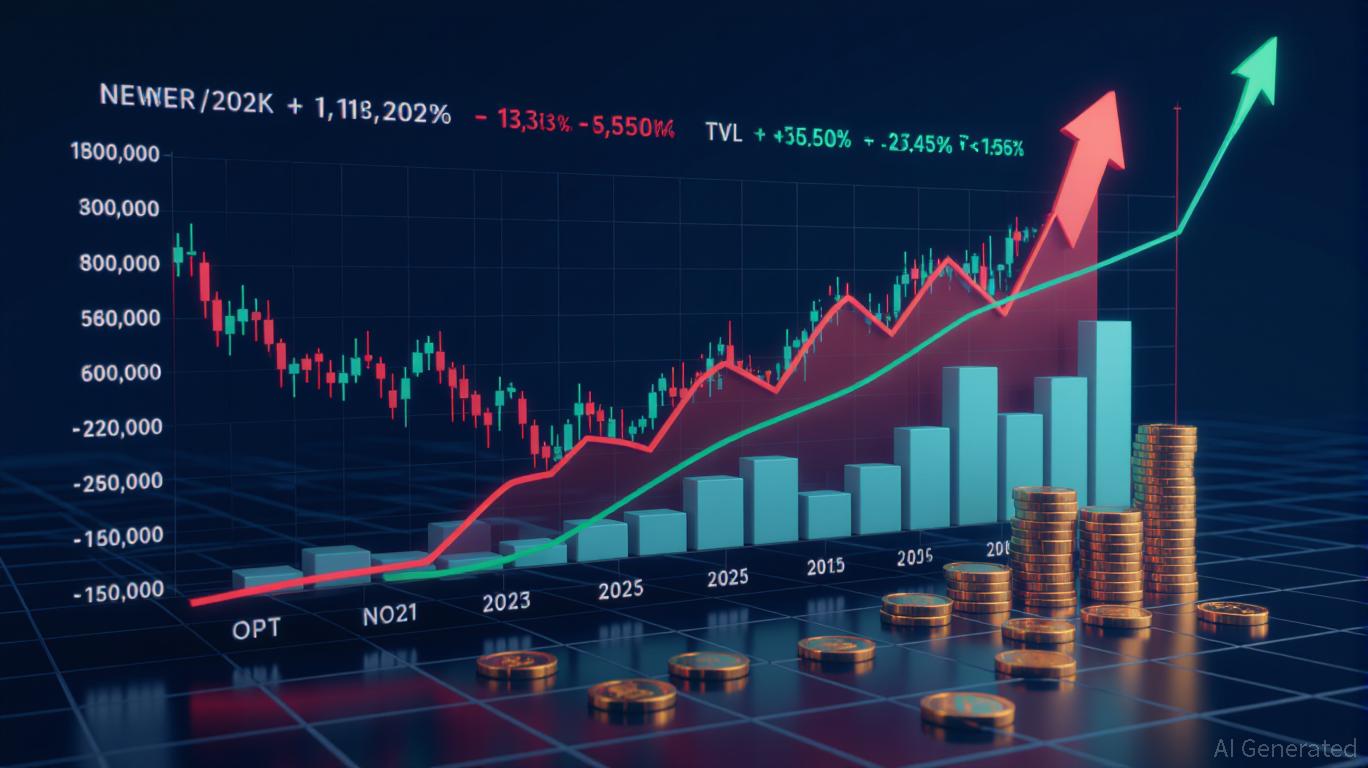LUNA Plunges 80.61% Over the Past Year as Market Fluctuations and Technical Weakness Persist
- LUNA fell 0.74% in 24 hours, with 14.1% weekly and 13.92% monthly declines, reflecting sustained bearish pressure. - Technical indicators like RSI and MACD confirm bearish momentum, with key support levels breached and moving averages underscoring the downtrend. - Backtesting shows limited short-term recovery after 10%+ drops, with weak statistical significance and high outcome dispersion. - Analysts warn LUNA remains in a long-term bear market, lacking bullish catalysts and facing continued downside ris
As of November 7, 2025,
The declines seen over both the daily and weekly periods point to a prevailing bearish environment, with LUNA facing sustained selling pressure amid turbulent market conditions. The price action fits into a broader long-term downtrend, as the token remains well below its historical highs. Market observers note that this drop is part of a larger pattern, and so far, there has been little buying interest to counteract the ongoing sell-off.
From a technical perspective, LUNA’s recent price movement has breached important support zones that previously helped limit losses. The 7-day and 1-month downturns indicate that
Wider market trends continue to favor risk-averse approaches, and LUNA is lagging behind most comparable cryptocurrencies. The absence of positive drivers, such as regulatory progress or major project announcements, has left the token exposed to ongoing sector rotation. Analysts point out that without a clear catalyst for change, LUNA is expected to remain under pressure.
Technical signals indicate that the sell-off may not have run its course, as downward momentum remains dominant. The relative strength index (RSI) continues to fall, reflecting weak buying interest and ongoing bearish sentiment. The MACD (Moving Average Convergence Divergence) also remains negative, reinforcing the prevailing downtrend. Together, these indicators suggest that LUNA could face further declines in the near future, especially if critical support levels are broken.
Backtest Hypothesis
To analyze LUNA’s behavior after major price drops, a backtest was conducted using data from January 1, 2022, to November 7, 2025. The study examined 57 occurrences where LUNA declined by 10% or more in a single day. On average, the token’s return the following day was -1.5%, with a win rate of about 39%, indicating limited potential for short-term rebounds.
Looking at the 30 days after such drops, the average cumulative return was +23.4%. However, this result lacked strong statistical backing, as the t-statistic did not show a significant advantage. The wide range of outcomes means that while some periods saw notable recoveries, others continued to decline, making it unreliable to base a trading strategy on this pattern alone.
Signs of mean reversion appeared between days 6 and 10, but the confidence intervals remained broad, suggesting considerable uncertainty. This means that although there are occasional rebound patterns, they are not strong enough to justify a systematic trading approach.
The backtest used a methodology based on close-to-close percentage changes, triggered by single-day drops of -10% or more, and evaluated performance over a 30-day window. The benchmark was LUNA’s unconditional drift, representing a buy-and-hold approach for the same timeframe. A two-tailed t-test was applied to determine the statistical significance of mean returns across events.
Disclaimer: The content of this article solely reflects the author's opinion and does not represent the platform in any capacity. This article is not intended to serve as a reference for making investment decisions.
You may also like
The Surge in MMT Token Value: A Driving Force in DeFi or Just a Temporary FOMO Hype?
- MMT token surged 1330% due to high-profile exchange listings and liquidity incentives, sparking debates over sustainability. - Proponents highlight Momentum's DeFi roadmap and institutional infrastructure as blockchain innovation catalysts, while skeptics warn of speculative overreach. - Phase One delivered $12B trading volume and $265M TVL, but recent price volatility ($4.4 to $2.06) and $109M futures liquidations signal market fragility. - On-chain metrics remain opaque, with a 7.2 turnover ratio indic

Astar 2.0’s Tactical Rollout and Its Impact on the Market
- Astar Network launched Astar 2.0 on September 13, 2023, aiming to unify Ethereum and Substrate blockchains via Astar Link. - The platform emphasizes interoperability, revised tokenomics, and enterprise partnerships to challenge L2 leaders like Arbitrum and Optimism . - With 150,000 TPS and cross-chain integrations, Astar 2.0 targets scalable DeFi adoption but faces TVL declines and competition from ZK-rollups. - Enterprise collaborations with Sony and Toyota highlight real-world use cases, though market

Trust Wallet Token (TWT) Price Forecast: Assessing the Influence of DeFi Collaborations and Growing Institutional Attention
- Trust Wallet Token (TWT) expands utility via DeFi partnerships and institutional adoption, transitioning from governance to multifunctional asset. - Strategic collaborations with Ondo Finance (RWAs) and Binance's FlexGas feature enhance TWT's institutional appeal and transactional utility. - CZ's endorsement and Trust Premium loyalty program drive demand, while price projections suggest potential growth to $3-$15 by 2025-2030. - Risks include regulatory uncertainty, competition, and reliance on Trust Wal

ZK Atlas Enhancement: Driving Blockchain Expansion and Attracting Institutional Investments
- ZKsync's Atlas Upgrade (Oct 8, 2025) breaks scalability barriers with 15,000+ TPS, near-zero fees, and ZK proofs enhancing Ethereum's Layer 2 performance. - Innovations like Airbender proof system (40% lower overhead) and multi-VM compatibility enable seamless DeFi interoperability, attracting institutional capital seeking secure, scalable infrastructure. - Post-upgrade ZK token surged 50%, reflecting investor confidence, while partnerships like Grvt's $19M funding signal active institutional adoption of
